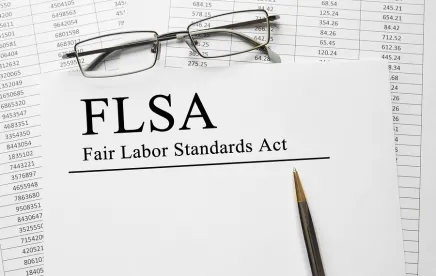A recent Lex Machina study (available via signup here) noted that the number of federal employment cases filed in the second and third quarter of 2020 was down. Not surprisingly, harassment and discrimination cases showed the biggest decrease, by almost 20%, likely due to the increase in remote work and decrease in actual interaction between workers.
However, Family and Medical Leave Act (FMLA) claims and wage and hour cases under the Fair Labor Standards Act (FLSA) were down only slightly. A crystal ball is not needed to predict that FLSA claims are likely to increase. One obvious reason is the increase in remote work. A change from office to remote work makes it harder to actually observe when someone is working. And, for a large number of workers, especially those impacted by changes to school or child care, work schedules may have shifted, such as more early or late work, in order to accommodate other demands on their time, and those changes may contribute to poor or difficult tracking.
Other aspects of the FLSA also make challenges more likely. One is the timing for filing a lawsuit. Pursuing federal harassment or discrimination claims requires first filing an administrative charge, which in most states typically has to be filed within 300 days (in some states it is 180 days). In contrast, FLSA claims can be filed up to three years after the alleged violation (but may be limited to a two-year period depending on circumstances).
Another difference is the potential for individual liability. Title VII does not allow for individual liability, but the FLSA does. The financial distress of a company might deter some harassment claims, but that is less likely for FLSA claims, since individuals can be sued and may be jointly liable. Finally, unlike harassment claims, FLSA claims cannot be easily waived in a release. FLSA claims are not properly waived unless there is approval from the Department of Labor or a court.
In short, employers should not interpret the decline in litigation as a decreased need for vigilance, especially for FLSA (and state wage and hour) claims.
The potential for such claims begs the question of what should companies be doing now? Below are a few suggestions:
-
If you have not already done so, reassess your procedures for timekeeping.Do they allow for or adequately address current work circumstances, in which many employees are teleworking?If not, make adjustments - in writing.If applicable, communicate the temporary nature of the changes.
-
Regularly remind nonexempt employees to follow established procedures regarding time tracking, which may include some of the following:
-
Reporting all time worked (and a reminder to either not work outside of scheduled hours or being sure to report the additional work time).
-
Asking for approval for overtime (but remember, even if not approved, overtime must be paid at time and a half of the regular rate) or otherwise communicating about the need for overtime.
-
-
Remind managers or supervisors to notice if someone seems to be working outside of normal hours, especially if it is a pattern (like frequent late night or weekend emails). And they should assess whether time reports are too regular (reflecting working Monday to Friday, 8-12 and 1-5).If so, the information is probably only reflecting the schedule for work, not the actual time the employee is working.



 />i
/>i

